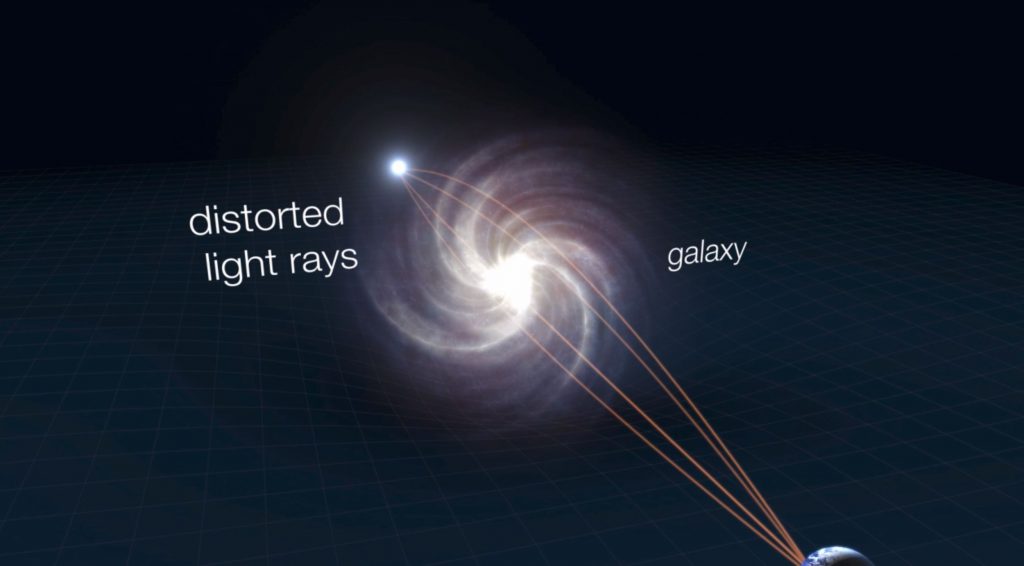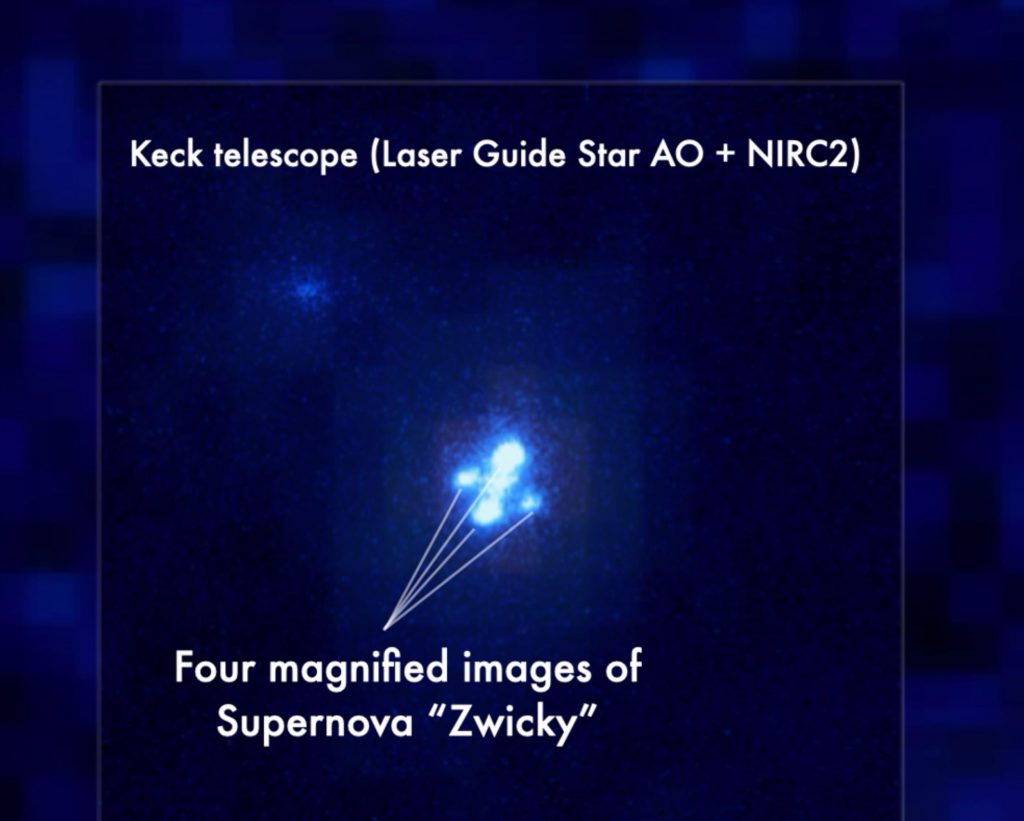Seeing quadruple: Rare gravitational lensing warps light from explosion of distant dying star
One image wasn’t enough for the universe to show off the powerful explosion of a distant dying star. Instead, a team of astronomers — with the help of an observatory atop Maunakea on the Big Island — observed the cosmic calamity in quadruple.

The team led by Ariel Goobar from the Oskar Klein Centre at Stockholm University in Sweden was able to capture the bizarre image of the supernova dubbed “SN Zwicky” thanks to a rare effect known as gravitational lensing, which happens when the gravity of a dense object distorts and brightens the light from another object behind it. SN Zwicky’s light was so warped by the gravity of a galaxy that it was quadruply-lensed, meaning four images of the same supernova could be seen in the sky from Earth.
The study, which includes observations from W. M. Keck Observatory on Maunakea, were recently published in Nature Astronomy. The Very Large Telescope, NASA’s Hubble Space Telescope, Hobby-Eberly Telescope, Liverpool Telescope and the Nordic Optical Telescope were also used in this study.
“With ZTF, we have the unique ability to catch and classify supernovae in near real time,” said Goobar, who was also the lead author of the study and is the director of the Oskar Klein Centre. “We noticed that SN Zwicky was brighter than it should have been given its distance to us and quickly realized that we were seeing a very rare phenomenon called strong gravitational lensing. Such lensed objects can help us to uniquely probe the amount and distribution of matter at the inner core of galaxies.”

Within weeks of detecting the supernova at the Zwicky Transient Facility at Palomar Observatory in California’s San Diego County, Goobar and his team used Keck Observatory’s Near-Infrared Camera 2 paired with its adaptive optics system and successfully resolved SN Zwicky, revealing that the lensing of the supernova was strong enough to have created multiple images of the same object.
“I was observing that night and was absolutely stunned when I saw the lensed image of SN Zwicky,” said Christoffer Fremling, a staff astronomer at the Caltech Optical Observatory who leads the ZTF supernova survey, called the Bright Transient Survey. “We catch and classify thousands of transients with the Bright Transient Survey, and that gives us a unique ability to find very rare phenomena such as SN Zwicky.”
Astronomers have observed the gravitational bending of light since 1919, just a few years after Albert Einstein developed the theory. Light from one cosmic object that encounters a dense object on its way to Earth can undergo gravitational lensing. The dense object acts like a lens that can bend and focus the light. Depending on how dense the lens is and the distance between the lens and Earth, this warping effect can vary in strength.
With strong lensing, the light from the cosmic object is so distorted that it is magnified and split into several copies of the same image.
But the transient nature of supernovae makes events such as SN Zwicky, also known as SN 2022qmx, very hard to spot. While scientists have spotted lensed duplicated images of distant objects called quasars many times before, only a handful of supernovae lensed into duplicated images have been found.

A classic example called iPTF16geu was discovered by the intermediate Palomar Transient Factory, a predecessor to ZTF. According to Goobar, SN Zwicky is the smallest resolved gravitational lens system found with optical telescopes; iPTF16geu was a wider system but had larger magnification.
SN Zwicky is also a Type Ia supernova. These dying stars end their lives with a light show that is always the same in brightness from event to event. This unique property was used in 1998 to reveal the accelerated expansion of the universe thanks to the unknown phenomenon called dark energy. Strongly lensed Type Ia supernovae allow astronomers to see further back in time because they are magnified, said Joel Johansson, a postdoctoral fellow at Stockholm University and a co-author of the recent study.
“Observing more of them will give us an unprecedented chance to explore the nature of dark energy,“ Johansson said.
“As we discover more ‘SN Zwickys’ with ZTF and the upcoming Vera Rubin Observatory, we will have another tool to chip away at the mysteries of the universe and find answers,” Goobar added.























